| May 07, 2019 | Volume 15 Issue 17 |
|
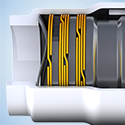 | Seal It, Protect It!
A Smalley Laminar Seal Retaining Ring is a metallic labyrinth seal consisting of multiple rings in a groove. To seal an assembly from contamination while withstanding high temperatures and corrosive environments, Laminar rings are produced from metal, not rubber, neoprene, or other non-metallic materials. The arrangement of the rings and the specific orientation of the rings are dictated by the application and the severity of the environment. Numerous configurations are available.
Learn more. |
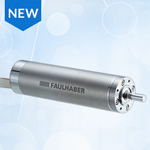 | New 16mm Brushless Motor Delivers High Torque & Speed
MICROMO launches the new FAULHABER 1660 BHx series, a high-power brushless DC motor based on 2-pole technology that's setting new standards for performance, speed, and power. 16mm in diameter and 60mm in length, the 1660 BHx series motor weighs only 78g and is ideal for handheld tools and devices requiring impressive power and high efficiency. Available in two motor design options, each optimized for speed and torque performance.
Learn more. |
 | Three causes of step motor heating and how to avoid them
When operating at high voltages and currents, step motors get warm or even hot. That's okay if the motor surface temperature doesn't exceed 100 C and the internal temperature remains cool enough to prevent melting of the winding insulation. If the insulation melts, the windings will short and the motor will no longer operate properly. Eric Rice, Applied Motion Products, runs through the sources of heating and how to avoid motor overheating. Some good tips here.
Read the full article. |
 | Hybrid heavy-duty truck concept developed at MIT
Researchers have devised a new way of powering 18-wheelers that could drastically curb pollution, increase efficiency, and reduce or even eliminate their net greenhouse gas emissions. The hybrid engine, which would allow the trucks to conveniently travel the same distances as today's conventional diesel trucks, could provide a technology bridge to one day going all-electric.
Read the full article. |
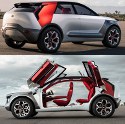 | Hot Concept Cars: Kia HabaNiro EV
One of the most popular vehicles at the New York Auto show at the end of April was not an American muscle car, a huge pickup truck, or even a super-luxe sedan. It was a hot little concept cleverly named a HabaNiro by Kia, and it got many people excited about what the near future of all-electric cars really could look like.
Read the full article. |
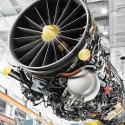 | How GE's 'leaky engine' became ubiquitous
"Over four decades, the F404 developed and produced at GE's Lynn, MA, plant has powered thousands of F/A-18 Hornets for the U.S. Navy and other Allied nations, as well as other aircraft applications, most notably the U.S. Air Force (USAF) F-117 Stealth Fighter," according to GE Aviation. The J101 design was dubbed a "continuous bleed" or "leaky" engine at GE "because a continuous flow of air from the fan cooled the afterburner and nozzle downstream. This clever design feature allowed the engine to operate at higher temperatures and pressures, but with less installed drag."
Read the GE Aviation blog. |
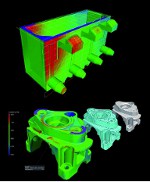 | Engineer's Toolbox:
Computer tomography in automotive plastics design and manufacturing
In the quest for lighter, stronger plastic parts, the automotive industry is experimenting with adding porosity and fiber and producing innovative shapes that expand functionality and performance. With these new efforts come deeper challenges that add to the familiar, problematic factors of predicting shrink rates, flow and cooling, and then verifying final part dimensions.
With both quality and future digital automation in mind, new inroads in computer tomography (CT) analysis software are helping speed up and optimize part and mold design. By Kamil David Szepanski, Volume Graphics
Read the full article. Very interesting! |
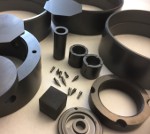 | Super-Hard Materials:
High thermal conductivity ceramic
Insaco machines CVD Silicon Carbide, a super-hard ceramic that features very high thermal conductivity. Specified by customers for semiconductor, aerospace and medical applications. Since 1947, Insaco has been custom fabricating precision parts from all technical ceramics including sapphire and quartz. Engineers are available to discuss material features / limitations and feasibility of design concepts.
Learn more at www.insaco.com. |
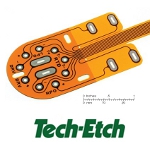 | Great Resources: Flexible circuit design guide
Tech-Etch uses advanced techniques to manufacture flex and rigid-flex circuits to exacting customer specifications. Special processes include selective plating of a single circuit with two different finishes, contoured circuits with variable metal thickness, semi-additive and subtractive techniques, open window or cantilevered contact leads, plus SMT for component assembly. Tech-Etch specializes in flexible circuits for medical device, medical implant, diagnostic ultrasound, telecommunications and patient monitoring applications, in addition to telecommunications, aerospace, semiconductor and other high-reliability electronic applications.
Download (no registration required). |
 | Get a linear shafting sample on the house
Lee Linear has produced world-class, linear motion components and linear shafting for over 40 years. With the ability to manufacture custom shafting -- threading, diameter reduction, keyways, flats, plating, and more -- to required standards in a short amount of time, Lee Linear is able to fulfill orders on time, eliminating downtime and increasing profits for its customers.
Request your sample. |
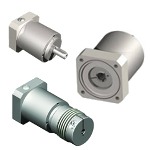 | New washdown servo gearboxes from Gam
Gam Gear's new SSP Series is an innovative washdown servo gearbox solution designed for food, medical, or sanitary applications. It is a precision inline planetary gearbox outwardly constructed of 300-series stainless steel. The motor adapter plate, housing, and shaft are all stainless steel. Viton seals, stainless steel hardware, and sealed interfaces provide outstanding corrosion resistance in all types of wet and caustic washdown environments. Ideal for any light or demanding servo application where corrosion resistance is a requirement, the SSP Series offers economy, high precision, and long-lasting performance.
Learn more. |
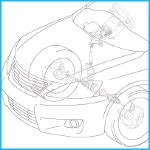 | Resins: Alkali stress crack resistance for automotive
The Polyplastics Group recently introduced a new polybutylene terephthalate (PBT) resin that delivers excellent alkali stress crack resistance for a range of automotive applications. DURANEX 532AR also exhibits outstanding hydrolysis, heat shock resistance, and electrical performance for components in the chassis and engine compartment. This material has successfully reduced the risk of cracking in molded articles by preventing alkali (often formed by rust on metal parts) from penetrating the inside of the resin, thus imparting toughness that helps generate less stress. Ideal for use in parts (like electrical components and sensors) installed in the chassis section and lower areas of vehicles.
Learn more. |
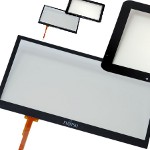 | Touch panels require 50 percent less input force
Fujitsu Components America has just released a series of customizable, flush-surface, resistive touch panels with less than half the input force of conventional resistive panels, nearly identical to that of projected capacitive panels. The new series (FID-1300 4-wire and FID-1520 5-wire) offers OEMs a cost-efficient alternative to projected capacitive touch panels with a comparable user experience, while maintaining resistive technology's reliable input capability and unlimited choice of input sources. Target applications include industrial automation and HMI machine control, medical equipment, and vehicle navigation systems.
Learn more. |
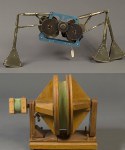 | Fun! NIST unidentified museum objects
From time to time, the National Institute of Standards and Technology publishes a blog entry on a new batch of "Unidentified Museum Objects" -- weird gizmos and doodads from the organization's underground storage shelves. Some of these thingamabobs may have been there for the better part of a century. The problem is, nobody knows what they were used for. Maybe you have a clue.
Read the NIST blog. |
| | Most popular last issue |
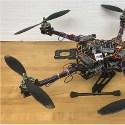 | Better drone-arm design inspired by insects
Most drones are not able to withstand wind because of their fixed-arm design. It's been a long-standing challenge. But a Purdue University researcher has come up with a patented design for unmanned aerial vehicles that works in windy conditions, is more energy efficient, and can handle a larger payload.
Read the full article. |
|
| | Videos+: Technologies and inspiration in action | |
|
|